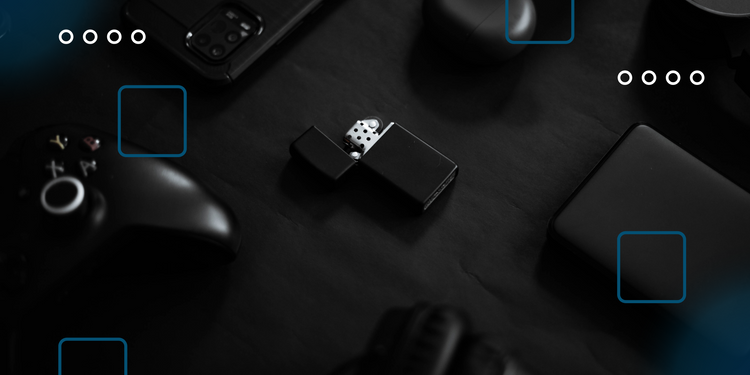📘Quick Installation Guide
1. Outdoor Antenna Setup
-
Mount the triangle-shaped antenna outside, preferably on the roof or an exterior wall.
-
Ensure it is facing the nearest mobile tower with minimal obstructions.
-
Use the provided mounting accessories to fix it securely.
-
Connect this antenna to the BTS port on the signal booster using the coaxial cable.
2. Indoor Antenna Setup
-
Place the mushroom-shaped antenna inside the building, in the area where you need improved signal.
-
Keep it at least 8 meters away from the outdoor antenna to prevent interference.
-
Connect this antenna to the Mobile port on the signal booster.
3. Power On
-
Plug the power adapter into the booster and then into a wall socket.
-
The power indicator should light up.
-
Wait for a few seconds for the device to stabilize.
4. Check Signal
-
Ensure your mobile phone has improved signal in the coverage area.
-
If signal improvement is poor, try adjusting the outdoor antenna’s direction for better reception.
⚠️ Important Notes
-
Do not connect antennas to the wrong ports (outdoor to Mobile, or indoor to BTS).
-
Keep a safe distance between antennas to avoid signal feedback (oscillation).
-
Use only the provided cables and accessories to ensure proper function.
-
If signal does not improve after installation, reposition the outdoor antenna or check all connections.

User Manual
Mobile Signal Booster (Professional Name: Micro Repeater)
This product functions by receiving outdoor mobile communication signals, transmitting them to the main unit for amplification, and then covering the indoor area through the indoor antenna, thereby improving the strength of indoor mobile signals. This ensures a stable and reliable communication experience for all mobile users indoors.
Terminology Introduction
Self-Oscillation
Self-oscillation occurs when the distance between the outdoor and indoor antennas is too close or lacks sufficient isolation. This causes the indoor antenna to transmit signals that are received by the outdoor antenna and repeatedly amplified, creating a large amount of useless interference signals (similar to the noise generated when a speaker and microphone are too close to each other). It is recommended that the distance between the outdoor and indoor antennas be more than 8 meters, preferably with a wall in between.
Directional Antenna
A directional antenna has a clear directionality, characterized by strong signal reception capability but a smaller reception angle. Therefore, during installation, the antenna direction needs to be carefully adjusted to achieve the best reception effect.
Dead Zones
- Often occur in mountainous or remote areas where the signal transmission distance is too far, leading to excessive attenuation, and the signal strength is below the minimum sensitivity that the mobile phone can receive, causing the phone to be unable to receive communication signals normally.
- When there are too many obstacles between the mobile phone and the base station, causing the base station signal to be unable to penetrate, leading to excessive attenuation and signal strength below the minimum sensitivity that the mobile phone can receive, resulting in the phone being unable to receive communication signals normally.
Busy Zones
Often occur in densely populated areas like shopping malls, where a single base station serves too many communications, and the base station capacity cannot meet the communication needs of all users, leading to many users in that area being unable to communicate normally (similar to slow internet speeds when too many people are online simultaneously).
Ping-Pong Effect
Often occurs in high-rise areas where the mobile phone can receive signals from multiple nearby base stations simultaneously near the windows. During a call, the phone will switch between base stations, causing the user to see good signal strength, but experience poor call quality.
Main Component Function Descriptions
Cables
Transmit the signal received by the outdoor antenna to the main unit.
Indoor Ceiling Antenna
With an approximate 135° angle, it emits the amplified signal from the main unit to cover the indoor area.
Main Unit
Processes the signal received from the BTS port, filters interference signals, enhances signal power, and then outputs via the MS port.
Outdoor Grid Antenna
With an approximate 60° angle, it receives signals from the base station.
Installation Instructions
1. Finding a Good Signal Location
First, use a mobile phone to check the signal strength in the area that needs signal optimization. Test at multiple locations and identify the spots with the best signal strength. The following standards indicate the best locations to install the outdoor antenna as a signal source:
- Full signal bars on the phone
- Smooth and normal call quality
- Normal download and gaming speeds on the phone
2. Testing Outdoor Signal - Step 1
- Connect the main unit to the outdoor antenna using a feeder cable and plug in the power.
- Do not connect the indoor antenna initially to avoid self-oscillation.
- Connect the power cable to the main unit.
- Connect the feeder cable to the outdoor antenna.
3. Testing Outdoor Signal - Step 2
- Install the outdoor antenna at the location identified in step 1, keeping the main unit 3-4 meters away from the outdoor antenna.
- Adjust the position and direction of the outdoor antenna while observing the signal bars on the main unit. Full signal bars indicate the best reception, ensuring optimal signal amplification. Once the best position is found, secure the outdoor antenna.
Prohibit aiming the antenna towards the sky or ground.
4. Connecting the Indoor Antenna
- Maintain the outdoor antenna's position and direction determined in step 3.
- Move the main unit to the area needing signal optimization and connect it to the indoor antenna.
- Ensure the distance between the outdoor and indoor antennas is at least 10 meters, preferably with a wall in between to prevent self-oscillation.
5. Call Testing
- To allow the phone signal to quickly switch to the frequency band amplified by the repeater, make a call within 2 meters of the indoor antenna, then hang up. After 20 seconds, make another call and test the call quality while checking if the signal bars improve.
6. Performance Testing
- Since the indoor ceiling antenna has a certain directionality, ensure it is vertically installed pointing towards the area needing signal coverage (do not place it upright on a table). Make calls while gradually moving away from the indoor antenna to test call quality and signal bar improvement in all areas.
7. Securing the Equipment
- After achieving the expected performance results, proceed to secure the outdoor antenna, feeder cable, and indoor antenna. If performance does not meet expectations, refer to the troubleshooting section below.
Troubleshooting
Problems and Solutions:
-
Outdoor and indoor antennas are too close: Main unit shows full signal bars but no signal improvement, indicating self-oscillation.
Solution: Tighten the feeder cable connections or swap the ends of the feeder cable, and adjust the distance between the indoor and outdoor antennas. -
Poor outdoor antenna direction: Main unit shows incomplete signal bars, and indoor signal coverage is small.
Solution: Adjust the direction of the outdoor antenna until the main unit shows full signal bars, ensure the antenna is away from metal panels and extend it outside any security grilles. -
Signal strength sufficient but unable to make calls: Could be due to the frequency mismatch or weak signal source, improper indoor antenna installation, or phone settings.
Solution: Enable the 4G VoLTE option.
Note:
The installation position of the outdoor receiving antenna is critical to performance. Ensure the outdoor antenna is elevated and distant from the indoor unit by more than 8 meters, away from metal objects, and that the connecting cables are not bundled with power or network cables.



